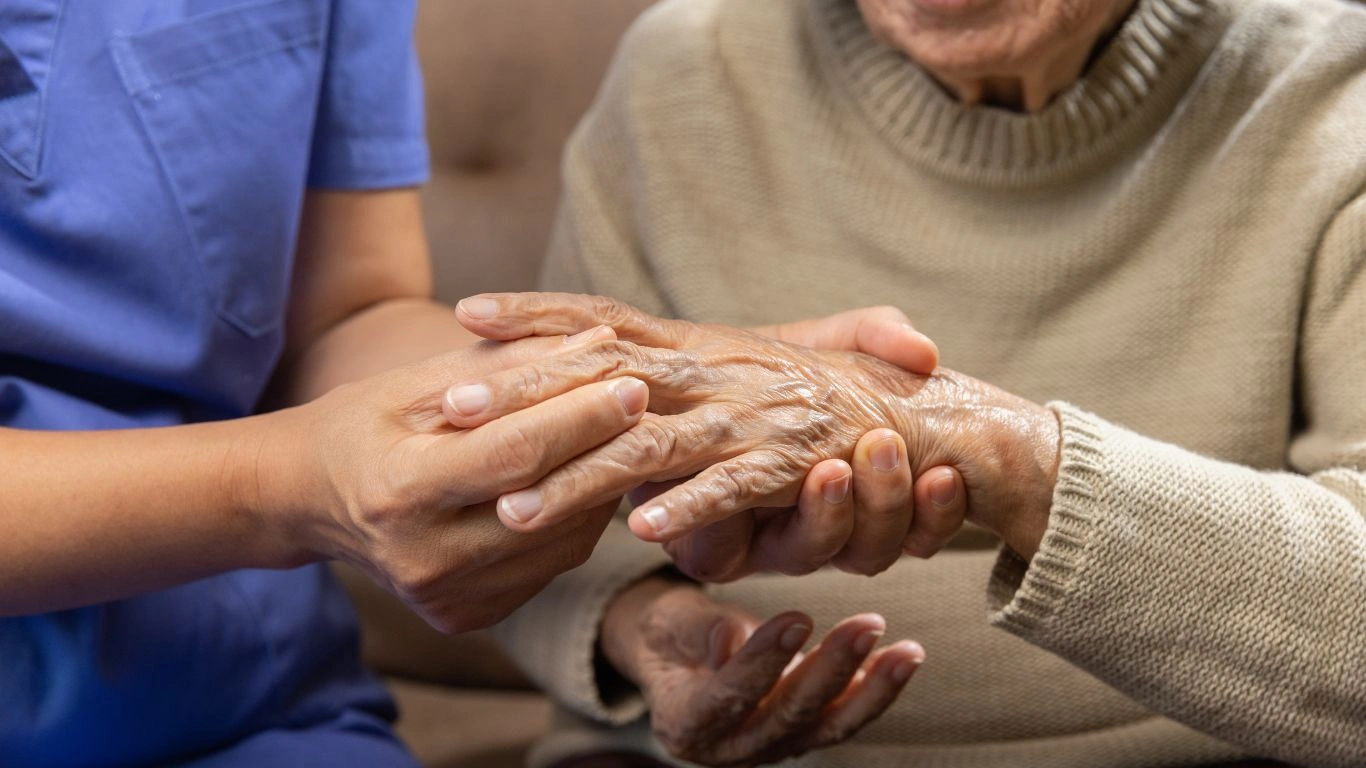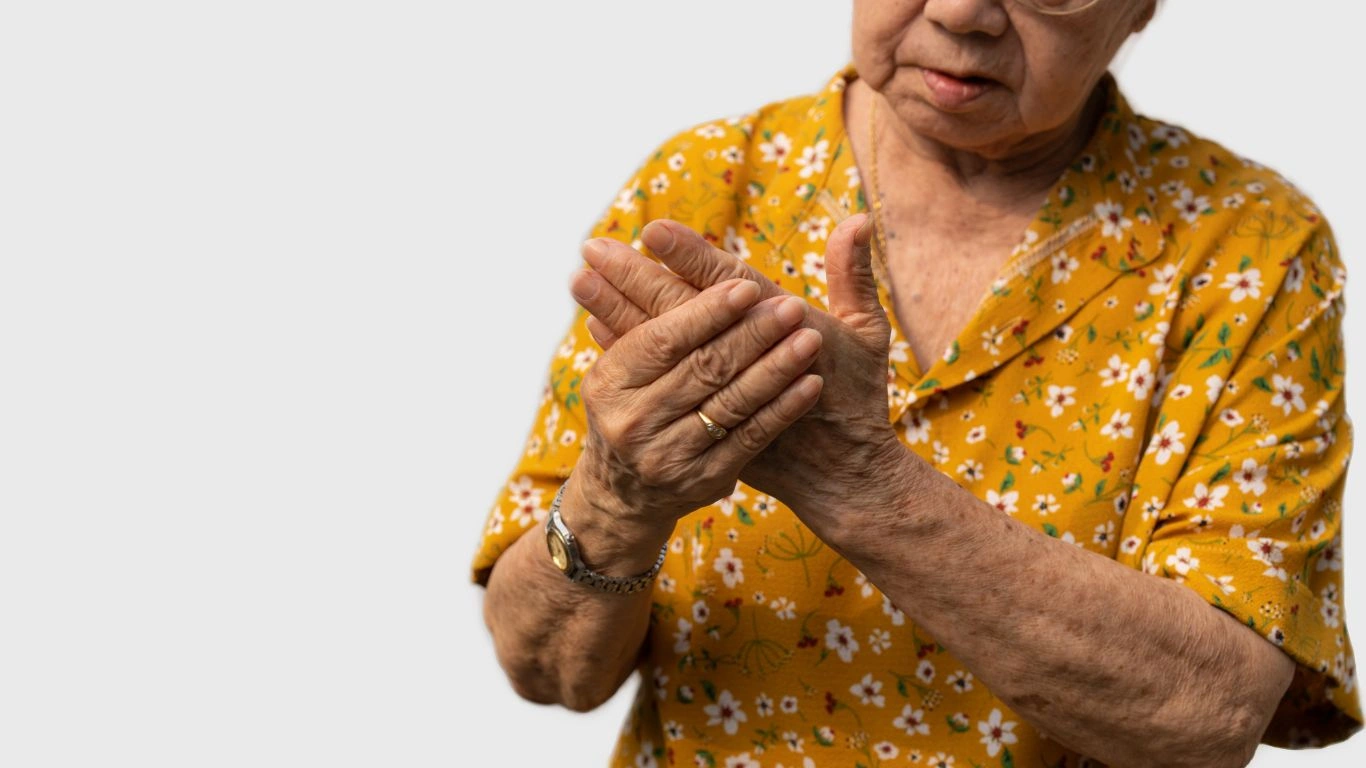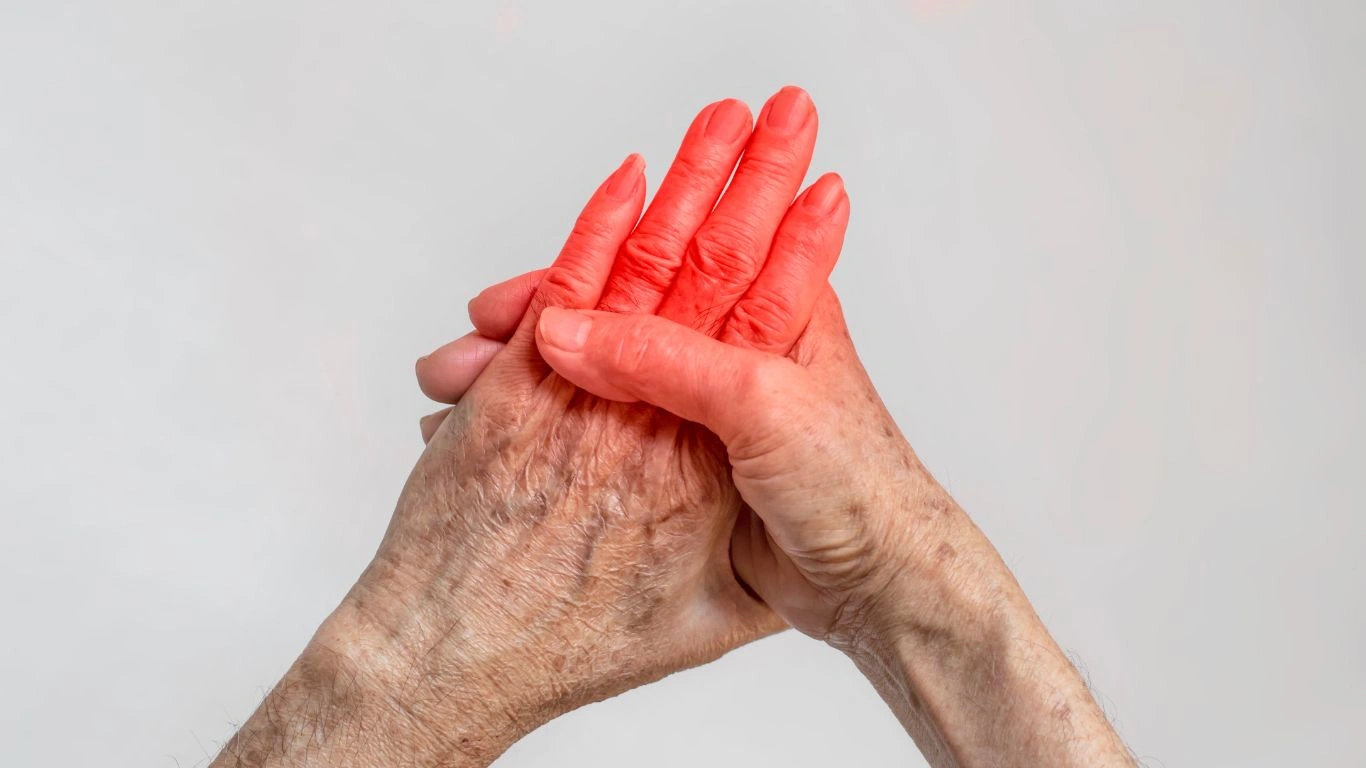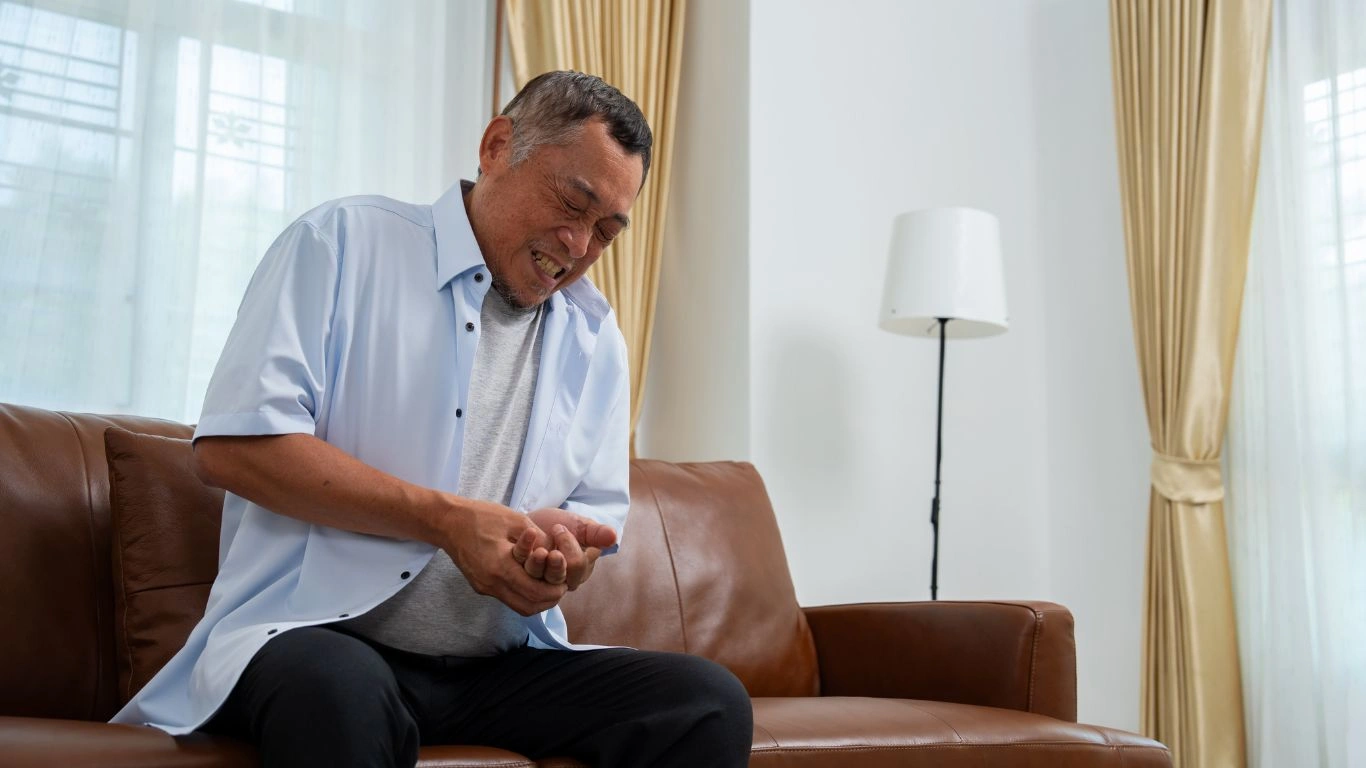How Rheumatoid Arthritis Impacts Your Mobility & Ways to Fight Back
Living with rheumatoid arthritis (RA) isn’t just about managing pain—it’s about navigating everyday life when your joints seem to have a mind of their own. One of the biggest challenges? How rheumatoid arthritis impacts your mobility. Whether it’s struggling to open a jar, climb stairs, or even get out of bed, mobility limitations can be frustrating, unpredictable, and downright exhausting. As someone who has spent years diagnosing and treating RA, I’ve seen firsthand how this condition affects movement in ways many people don’t expect.
The Surprising Ways Rheumatoid Arthritis Limits Mobility

When people think of RA, they often imagine joint pain and stiffness. But the reality is, mobility issues aren’t just about discomfort—they’re about how inflamed joints physically prevent movement. From small daily tasks to major lifestyle changes, the impact can be overwhelming.
Morning Stiffness That Feels Like Cement
Ever woken up feeling like your body is wrapped in cement? That’s morning stiffness, a hallmark of RA. It can take hours for your joints to loosen up enough to move comfortably. Many of my patients describe it as feeling “stuck” in their own body, making even simple movements—like walking to the bathroom—a battle.
Unpredictable Joint Locking
One minute, you’re walking just fine. The next? Your knee decides to lock up, or your ankle won’t cooperate. RA inflammation can cause sudden joint instability, making movement not only painful but unpredictable. I’ve had patients tell me they feel like their legs “give out” without warning, making them hesitant to move at all.
Swollen Joints and Limited Range of Motion
RA doesn’t just make joints hurt—it causes swelling that physically limits movement. Try bending a knee that’s double its normal size, or gripping a fork with swollen fingers. Many people don’t realize that joint swelling itself is a major mobility barrier, not just the pain that comes with it.
The Daily Struggles of Moving with RA

Walking Feels Like an Obstacle Course
For many RA sufferers, something as simple as walking can feel like navigating an obstacle course. Uneven surfaces, stairs, or long distances can become overwhelming. Some days, you may feel fine, but on flare-up days? Even taking a few steps can feel like climbing a mountain.
Grip Strength: The Silent Mobility Struggle
Mobility isn’t just about walking—it’s also about using your hands. RA weakens grip strength, making simple tasks frustrating. Holding a coffee cup, turning a doorknob, or even texting can be painful. I’ve had patients tell me they feel embarrassed when they drop things unexpectedly, but trust me—it’s not your fault. It’s the inflammation at work.
Fatigue That Stops You in Your Tracks
Mobility isn’t just about your joints—it’s also about having the energy to move. RA fatigue is no joke. It’s an all-consuming exhaustion that can hit like a brick wall, making even short walks or standing for long periods feel impossible. Many people underestimate how much this fatigue impacts overall movement.
What Can You Do to Improve Mobility?

While RA mobility challenges are tough, there are ways to fight back. Over the years, I’ve seen many patients regain movement and independence by making a few strategic changes.
Staying Active—But Gently
Exercise might sound counterintuitive when your joints hurt, but movement actually helps. Gentle activities like swimming, yoga, or tai chi can improve flexibility and keep joints from stiffening up too much.
Using Assistive Devices
There’s no shame in using mobility aids. Whether it’s a cane, braces, or even ergonomic kitchen tools, these small changes can make a big difference in maintaining independence.
Managing Flare-Ups
Flare-ups are inevitable, but knowing how to handle them is key. Ice packs, warm compresses, and rest days are just as important as movement.
RA mobility issues are challenging, but you don’t have to navigate them alone. Understanding how this condition affects movement is the first step in taking control.
Why Joint Deformities Make Mobility Even Tougher

One thing I often tell my patients is that RA isn’t just about pain—it changes your joints over time. Chronic inflammation can lead to permanent deformities, making movement even more challenging. And unlike flare-ups that come and go, these changes are often irreversible. That’s why early intervention is so important.
Fingers That Won’t Cooperate
Have you ever noticed that some people with RA have fingers that drift sideways or curl unnaturally? That’s called ulnar drift, and it makes everyday tasks—like buttoning a shirt or holding a pen—way harder than they should be. I once had a patient who loved painting but had to stop because she couldn’t hold a brush anymore. We worked on adaptive tools, and she eventually found a way to keep creating. But it’s a reminder that these changes aren’t just physical; they impact the things we love.
Collapsed Arches and Unstable Ankles
RA doesn’t just target fingers and wrists—it also wreaks havoc on the feet and ankles. Over time, the arches of your feet can collapse, leading to severe pain and instability. That wobbly feeling when you walk? It’s not in your head. When the small joints in your feet shift, it throws off your entire balance. Proper footwear and orthotics can make a world of difference here.
The Emotional Toll of Losing Mobility

When we talk about mobility, we often focus on the physical challenges. But let’s be real—the emotional side of losing mobility is just as tough, if not tougher. I’ve seen patients go from being fiercely independent to suddenly relying on others for help, and that shift isn’t easy.
The Frustration of Feeling Trapped
Imagine waking up one morning, ready to start your day, only to realize your body isn’t cooperating. You want to move, to get up and do things, but your joints have other plans. It’s frustrating, infuriating even. I’ve had patients tell me they feel “trapped” inside their own body, and honestly, I get it.
Social Withdrawal and Isolation
Let’s talk about something a lot of people don’t mention—how RA can make you avoid social situations. When walking is painful and unpredictable, the idea of going out with friends or attending family events starts to feel overwhelming. “What if I can’t keep up?” “What if I need to sit down?” “What if people don’t understand?” These are real concerns, and they can lead to isolation if not addressed.
The Mental Battle of Asking for Help
Asking for help isn’t easy. A lot of people with RA (especially those who were once very active) struggle with this. It feels like giving up, like losing a piece of independence. But here’s the thing—needing help doesn’t make you weak. It just means you’re adapting. I always remind my patients that accepting support is part of the journey, not a failure.
How to Maintain Independence Despite Mobility Challenges
Okay, now for the good news—there are ways to maintain mobility and independence, even with RA. It might take some adjustments, but I’ve seen firsthand how small changes can have a big impact.
Making Your Home RA-Friendly
Your home should work for you, not against you. Simple modifications can make daily tasks easier and reduce strain on your joints. Some ideas include:
- Installing grab bars in the bathroom for extra support
- Using electric can openers and easy-grip kitchen utensils
- Placing frequently used items within easy reach to avoid overextending
- Switching to slip-on shoes instead of ones with laces
Finding the Right Balance Between Rest and Activity
One of the hardest things to figure out with RA is how much to push yourself. Too much activity can lead to a flare-up, but too much rest can lead to stiffness. It’s all about balance. Low-impact exercises like swimming, stretching, or even short walks can help keep your joints moving without overdoing it.
Working with a Physical Therapist
A good physical therapist can be a game-changer. They can teach you exercises that improve mobility without causing unnecessary pain. I’ve had patients who swore they’d never be able to move comfortably again, only to find that the right therapy techniques made a huge difference.
Mobility challenges with RA are real, but they don’t have to define you. With the right strategies and support, it’s absolutely possible to keep moving and maintain a sense of independence.
Case Studies & Real-Life Examples

One of the most powerful ways to understand the impact of rheumatoid arthritis (RA) on mobility is by hearing from real people who live with it every day. Over the years, I’ve worked with countless individuals navigating these challenges, and their experiences highlight the resilience and adaptability of the human spirit.
Emma’s Story: Learning to Walk Again After a Major Flare
Emma was a 42-year-old schoolteacher who had always been active—until a severe RA flare left her struggling to walk. Her knees became so inflamed that even standing for a few minutes was unbearable. After months of trial and error, she found relief through a combination of physical therapy, aquatic exercises, and medication adjustments. Today, she’s back in the classroom, using a mobility aid on tough days but refusing to let RA control her life.
James’ Journey: Overcoming Hand Mobility Challenges
James, a retired chef, faced one of the most frustrating RA symptoms—crippling stiffness in his hands. Cooking, something he loved, became nearly impossible. But instead of giving up, he adapted. By using ergonomic kitchen tools and taking frequent hand-stretching breaks, he found a way to continue doing what he loved. His story is a reminder that small adjustments can make a big difference.
Sophia’s Experience: Managing Fatigue and Daily Movement
Sophia, a mother of two, found RA fatigue to be her biggest hurdle. While she had relatively mild joint pain, the exhaustion was relentless. She learned to pace herself, taking breaks when needed and prioritizing self-care. She also started meal prepping on “good days” to make life easier when fatigue hit. Her journey shows that managing RA isn’t just about joint pain—it’s about conserving energy wisely.
Key Takeaways: What You Need to Remember
RA affects mobility in many ways, but with the right strategies, you can maintain independence and improve your quality of life. Here are some key takeaways:
- Early intervention is crucial: The sooner you address mobility issues, the better your chances of maintaining function.
- Adaptation is key: Whether it’s using assistive devices, modifying activities, or adjusting your home, small changes help.
- Exercise is your friend: Low-impact movement can keep your joints from stiffening up and improve overall function.
- Fatigue management matters: Learning to balance activity and rest is just as important as managing joint pain.
- You’re not alone: Support groups, physical therapists, and adaptive tools can all make a difference.
FAQs
Can rheumatoid arthritis completely take away my ability to walk?
In severe cases, untreated RA can lead to significant mobility loss. However, with proper treatment, physical therapy, and adaptive strategies, most people can maintain some level of mobility.
What are the best exercises for improving mobility with RA?
Low-impact exercises like swimming, yoga, and tai chi are great for keeping joints flexible without adding strain. A physical therapist can create a custom plan for you.
How can I make my home more mobility-friendly?
Simple modifications like grab bars, easy-grip kitchen tools, and slip-resistant flooring can make daily tasks much easier. Consider working with an occupational therapist for personalized recommendations.
Does diet play a role in RA mobility?
Absolutely! Anti-inflammatory diets rich in omega-3s, fruits, and vegetables can help reduce inflammation and improve joint function.
Should I use mobility aids?
There’s no shame in using a cane, walker, or braces if they help you move more comfortably. The goal is to stay active and independent, however that looks for you.
Bonus: Additional Resources & DIY Tips
If you’re looking for more ways to improve mobility and manage RA, here are some resources that can help:
- Arthritis Foundation – Reliable information on RA management
- RheumatoidArthritis.net – A community of RA patients sharing experiences
- Mayo Clinic RA Guide – Medical insights into treatment options
- CDC Arthritis Resources – Public health info on arthritis and mobility
And if you’re looking for some easy DIY tips, try these:
- Use heated gloves for stiff hands in the morning
- Try a voice-activated assistant (like Alexa) for hands-free tasks
- Use an electric can opener to reduce wrist strain
- Keep a lightweight grabber tool handy for reaching high shelves
Appendix: References, Disclaimer & Call to Action
References:
Disclaimer: This article is for informational purposes only and does not replace medical advice. Always consult a healthcare professional before making changes to your treatment plan.
Call to Action: If you or a loved one are struggling with RA and mobility, don’t wait—reach out to a specialist. Early intervention makes all the difference! Have any personal experiences or tips? Share them in the comments below!

Tarra Nugroho is a dedicated Nurse Practitioner with a strong foundation in family and preventive care. She brings both compassion and clinical expertise to her practice, focusing on patient-centered care and health education. As a contributor to Healthusias.com, Tarra translates medical knowledge into clear, empowering articles on topics like women’s health, chronic disease management, and lifestyle medicine. Her mission is simple: help people feel seen, heard, and informed—both in the clinic and through the content she creates. When she’s not caring for patients, Tarra enjoys weekend hikes, plant-based cooking, and curling up with a good health podcast.





